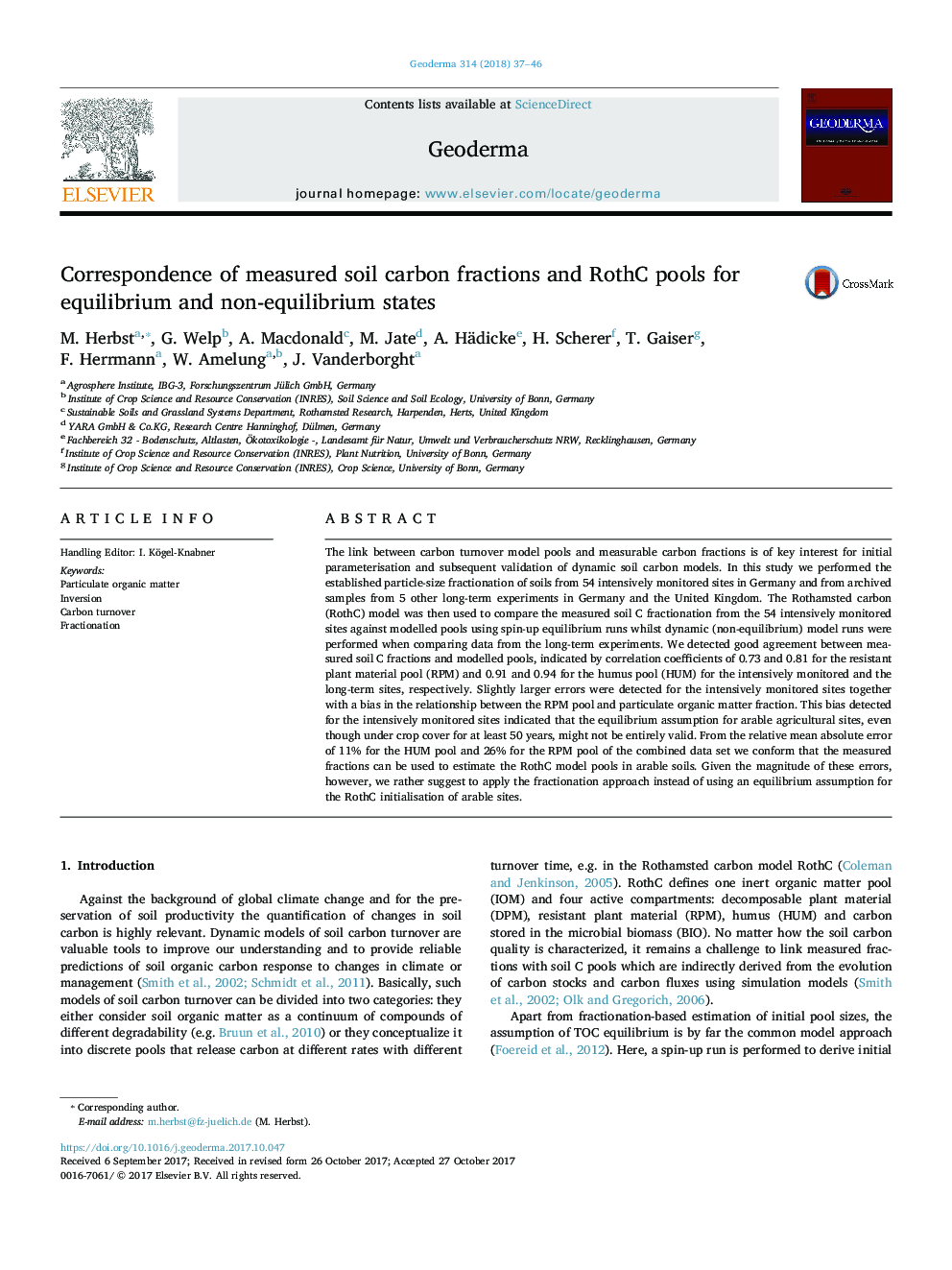| Article ID | Journal | Published Year | Pages | File Type |
|---|---|---|---|---|
| 8894248 | Geoderma | 2018 | 10 Pages |
Abstract
The link between carbon turnover model pools and measurable carbon fractions is of key interest for initial parameterisation and subsequent validation of dynamic soil carbon models. In this study we performed the established particle-size fractionation of soils from 54 intensively monitored sites in Germany and from archived samples from 5 other long-term experiments in Germany and the United Kingdom. The Rothamsted carbon (RothC) model was then used to compare the measured soil C fractionation from the 54 intensively monitored sites against modelled pools using spin-up equilibrium runs whilst dynamic (non-equilibrium) model runs were performed when comparing data from the long-term experiments. We detected good agreement between measured soil C fractions and modelled pools, indicated by correlation coefficients of 0.73 and 0.81 for the resistant plant material pool (RPM) and 0.91 and 0.94 for the humus pool (HUM) for the intensively monitored and the long-term sites, respectively. Slightly larger errors were detected for the intensively monitored sites together with a bias in the relationship between the RPM pool and particulate organic matter fraction. This bias detected for the intensively monitored sites indicated that the equilibrium assumption for arable agricultural sites, even though under crop cover for at least 50Â years, might not be entirely valid. From the relative mean absolute error of 11% for the HUM pool and 26% for the RPM pool of the combined data set we conform that the measured fractions can be used to estimate the RothC model pools in arable soils. Given the magnitude of these errors, however, we rather suggest to apply the fractionation approach instead of using an equilibrium assumption for the RothC initialisation of arable sites.
Related Topics
Physical Sciences and Engineering
Earth and Planetary Sciences
Earth-Surface Processes
Authors
M. Herbst, G. Welp, A. Macdonald, M. Jate, A. Hädicke, H. Scherer, T. Gaiser, F. Herrmann, W. Amelung, J. Vanderborght,
